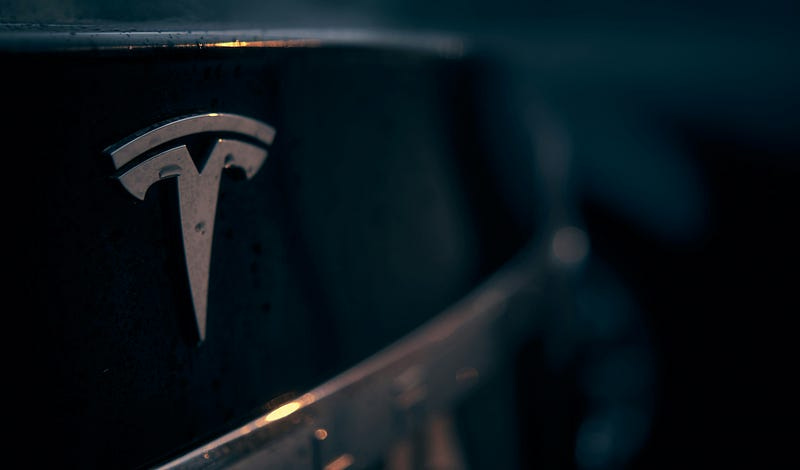Tesla Is Having Its Apple Moment, And Not In A Good Way
Tesla's underhanded battery manipulation has been caught out.

Over the years, Tesla has been consistently compared to Apple. It’s easy to see why; they both utilise efficient simplicity and power-branding to dominate their respective industries. But this simplicity can also be wielded to conceal some rather nefarious actions. Well, it turns out both Apple and Tesla have used this simplicity to meddle with their customers’ batteries. And guess what? It’s backfired for both of them.
Tesla’s battery skullduggery was first discovered and prosecuted in Norway. It all began when owners of the Tesla Model S noticed that a software update pushed by Tesla reduced their car’s range by 11% and limited the peak charge rate from 120 kW to just 90 kW. Now, battery packs do degrade over time, causing slower charge rates and reducing the available range; however, this happens gradually, unlike how suddenly it occurred for these owners, all at the same time, after the same software update.
Upon being found out, Tesla claimed the update was meant to preserve the life of the battery and improve the car’s safety features. However, that doesn’t quite fly. Previous Model S’s didn’t have this update, and their battery life and safety were absolutely fine. In fact, early Model S’s were the vehicles that proved to the industry that EV batteries had a long enough battery life to be viable and that they could be very, very safe. What’s more, this software update came about around the same time the Tesla Model 3 was launched in Europe, whose range was larger than these Model S’s, and cost around the same as these older Model S models’ resale value at the time. As Musk would say — “concerning.”
This has led to multiple lawsuits against Tesla, mostly in Norway. The first levied in 2019 was for solely overlimiting the range, which settled in 2021, with Tesla paying a total of $1.5 million to claimants! However, another lawsuit recently finalised, this time surrounding the limited charge rate, which ordered Tesla to pay claimants the equivalent of $4,300; however, this contained the caveat that the court could potentially demand further compensation down the line.
Now, Tesla is notorious for dodging even the most watertight lawsuits levied against them, so how was this Norwegian court able to pin them down? Well, the court found that the range and charge speeds were “central features” of the product and a large part of the reason consumers bought the car. As such, limiting these features later without informing the consumer as to why and giving them the ability to opt-out goes against Norwegian law.
However, none of this is new. Apple was pulling this exact same trick way back in 2016. Essentially, every time a new iPhone was released, Apple would push an update to older iPhone models that would secretly throttle their performance (sometimes becoming 58% slower). This was in the guise of protecting the battery and extending the phone’s lifespan, which is true, but the timing of these updates also pushed many users to buy new iPhone handsets. Needless to say, these underhanded tactics enraged customers, and this became known as “batterygate.”
In fact, by the time Tesla was rolling out its vehicle-crippling update in 2019, there was already a flood of class-action lawsuits against Apple over “batterygate,” and the writing was clearly on the wall for Apple to ditch its highly immoral strategies. Yet, Tesla still went ahead with this stupid plan, even though a far bigger company had just proven it was a wildly ineffective move.
So, why does this matter today? These old lawsuits are settled, and the companies have learnt their lessons. Right?
Well, earlier this year, Tesla reduced the estimated range of its Model Y performance from 303 miles to 285 miles. This was found to not just be a piece of dodgy marketing. It turns out that programmers had rigged these cars’ range estimation software to exaggerate how far the vehicle could go when the battery was full, making the 303 number seem genuine, only for the range to disappear into thin air as the battery depletes.
Again, many customers buy Teslas because they appear to have a far better range than any other EV. So, not only is this tantamount to false advertising, but because it is a core component of Tesla’s unique selling proposition (USP), it makes defending this move almost impossible in court.
We need to remember that just a few years ago, Tesla tried to copy Apple’s worst customer manipulation tactic because they are still trying to pull the wool over our eyes. Who knows what other underhanded tactics Musk is using to sell more vehicles and meet his sales targets? We have to demand transparency and hold them to account for their shitty strategies. Not just Tesla, but all overreaching tech companies.
Thanks for reading! Content like this doesn’t happen without your support. So, if you want to see more like this, don’t forget to Subscribe and help get the word out by hitting the share button below.
Sources: Electrive, Wired, BBC, Standard, Electrek, Smart Asset, Reuters, HBSS Law

